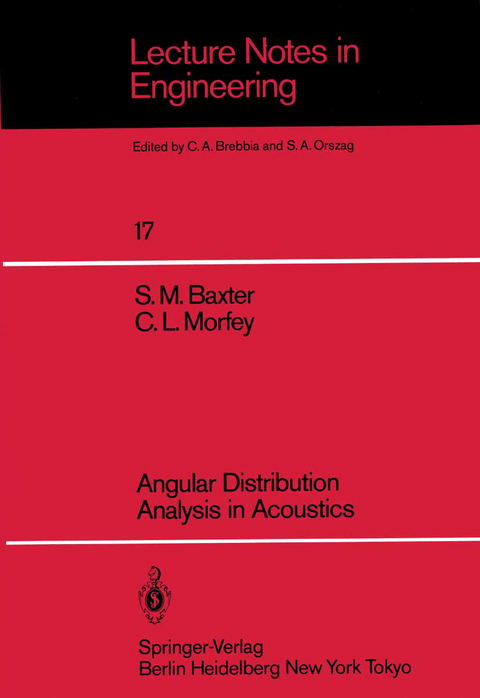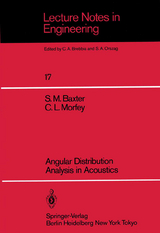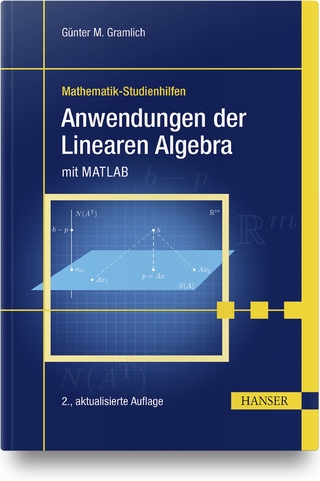Angular Distribution Analysis in Acoustics
Springer Berlin (Verlag)
978-3-540-16220-9 (ISBN)
1 Introduction.- 2 The Free Wave Sound Field.- 2.1 Introduction.- 2.2 Properties of the Free Wave Field.- 2.3 Spectral Density Measurement in Free Wave Fields: Cook's Theorem.- 2.4 Extension of Cook's Theorem for Anisotropic Fields.- 2.5 Summary.- References.- Figures.- 3 Inference of the Plane Wave Weighting Function From Spectral Density Measurements.- 3.1 Introduction.- 3.2 Cook's Theorem and Nondiffuse Fields.- 3.3 Inductive Weighting Analysis: Parametric Models.- 3.4 Direct Weighting Analysis: Theoretical Inverse.- 3.5 Direct Weighting Analysis: Wavenumber Spectra.- 3.6 Direct Weighting Analysis: Stationary Phase Approximation.- 3.7 Direct Weighting Analysis: Spherical Harmonic Expansions.- 3.8 Conclusions.- References.- Figures.- 4 The Spherical Harmonic Analysis of Free Wave Fields in Practice.- 4.1 Introduction.- 4.2 Formulation of the Harmonic Search Problem: Least Squares Fitting.- 4.3 Harmonic Analysis of the Gravitational and Magnetic Fields of Planets.- 4.4 Development of Harmonic Search Procedure.- 4.5 Development of Axisymmetric Harmonic Search Procedure.- 4.6 Properties of Analysis Results.- 4.7 Conclusions.- References.- Figures.- Tables.- 5 Summary.- Appendix A.- Appendix B.- Appendix C.
| Erscheint lt. Verlag | 1.2.1986 |
|---|---|
| Reihe/Serie | Lecture Notes in Engineering |
| Zusatzinfo | VII, 202 p. |
| Verlagsort | Berlin |
| Sprache | englisch |
| Maße | 170 x 244 mm |
| Gewicht | 374 g |
| Themenwelt | Mathematik / Informatik ► Mathematik ► Algebra |
| Mathematik / Informatik ► Mathematik ► Angewandte Mathematik | |
| Technik | |
| Schlagworte | Calculus • Design • Development • Linearity • Model • quality • Regression • Statistics |
| ISBN-10 | 3-540-16220-8 / 3540162208 |
| ISBN-13 | 978-3-540-16220-9 / 9783540162209 |
| Zustand | Neuware |
| Haben Sie eine Frage zum Produkt? |
aus dem Bereich




